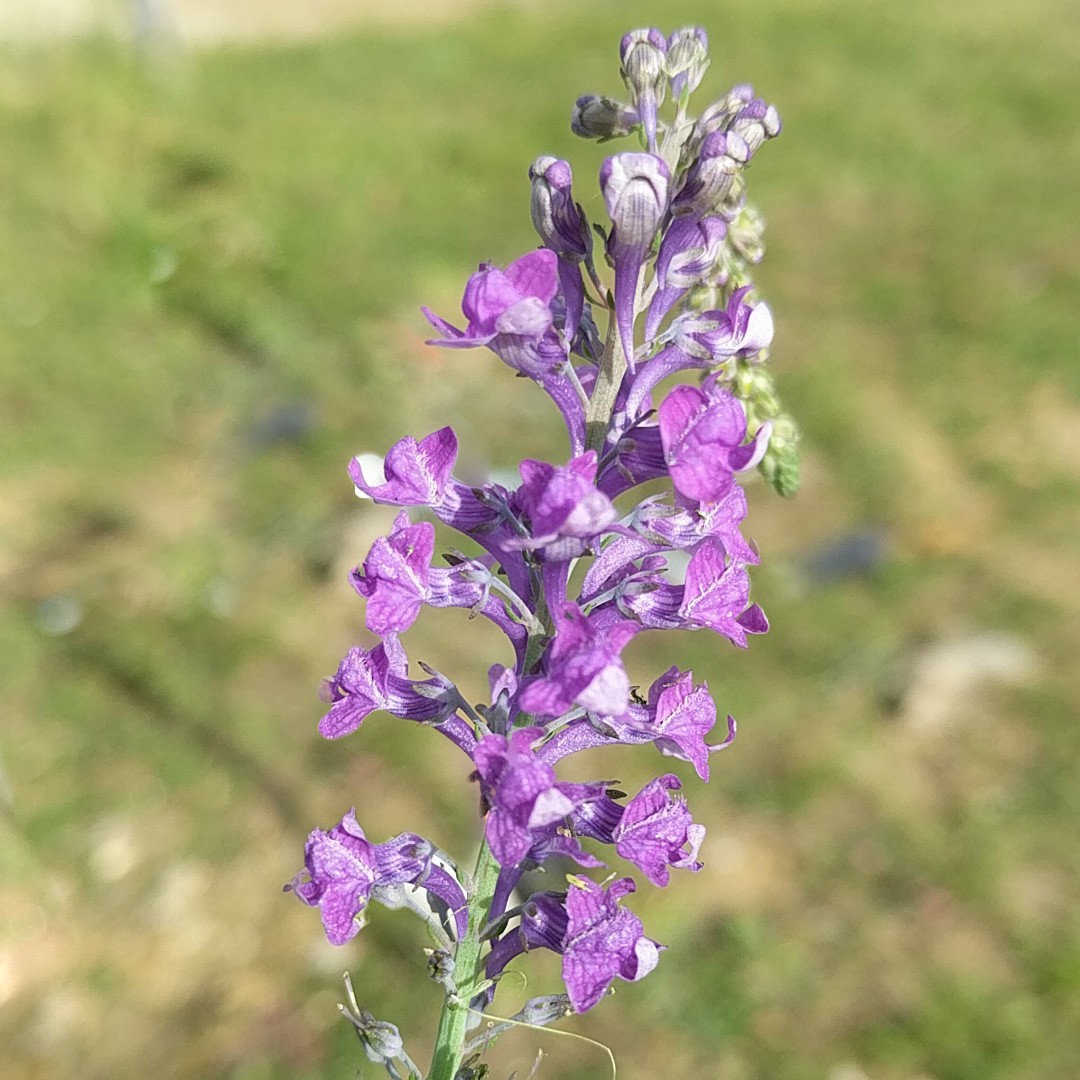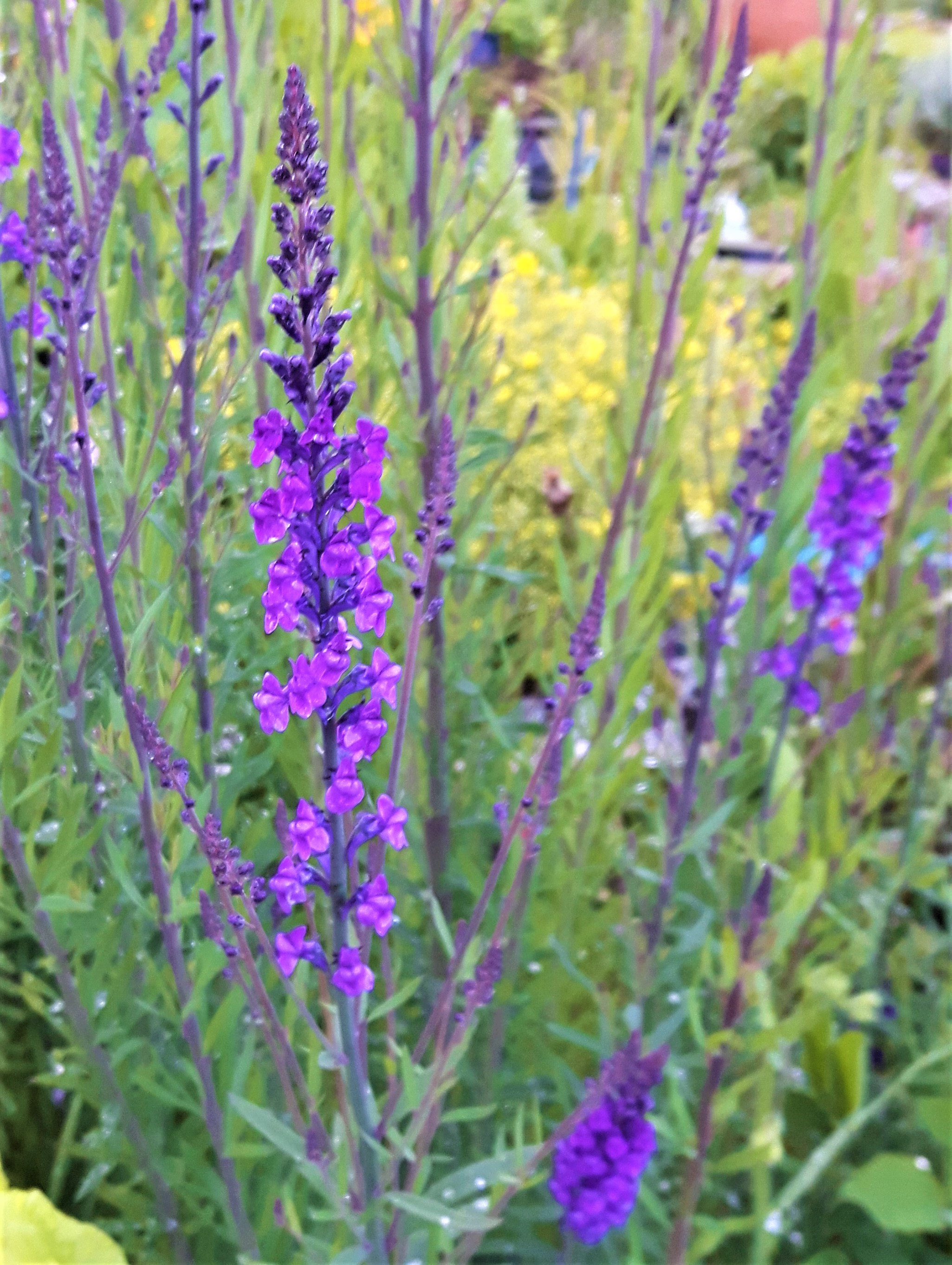Purple Toadflax: The
Title: Purple Toadflax: The Versatile and Beautiful Flower
Introduction:
Purple toadflax (Linaria purpurea) is a flowering plant in the plantain family (Plantaginaceae). It is native to Italy, but it can be found growing wild in many parts of Europe, North America, and Asia. Purple toadflax is a perennial herb that can grow up to 1 meter tall. It has narrow, grayish-green leaves and clusters of small, purple flowers. Purple toadflax is a popular garden plant, and it is also used as a medicinal herb.
Main Content:
Appearance:
Purple toadflax is a herbaceous plant that grows up to 1 meter tall. It has slender, upright stems that are covered with narrow, grayish-green leaves. The leaves are arranged in opposite pairs along the stem. The flowers of purple toadflax are small and tubular, with two lips. The upper lip is usually larger than the lower lip. The flowers are typically purple in color, but they can also be white, yellow, or orange. The flowers are arranged in dense spikes that can reach up to 30 centimeters long.
Habitat and Distribution:
Purple toadflax is native to Italy, but it can now be found growing wild in many parts of Europe, North America, and Asia. It is a common weed in some areas, but it is also cultivated as an ornamental plant. Purple toadflax prefers well-drained soil and full sun. It can tolerate a wide range of temperatures and soil conditions.
Cultivation:
Purple toadflax is a relatively easy plant to grow. It can be propagated from seed or by division. Seeds should be sown in the spring in a well-drained soil that is rich in organic matter. Seeds should be planted about 1/2 inch deep and kept moist until they germinate. Purple toadflax plants can also be divided in the spring or fall. To divide a plant, simply dig it up and carefully separate the roots. Each division should have at least a few healthy roots and shoots. Plant the divisions in a new location and water them well.
Medicinal Uses:
Purple toadflax has been used for centuries as a medicinal herb. It is said to have a number of health benefits, including:
- Reducing inflammation
- Relieving pain
- Improving digestion
- Treating respiratory problems
- Boosting the immune system
However, it is important to note that purple toadflax can also be toxic if consumed in large quantities. It is important to consult with a doctor before using purple toadflax as a medicinal herb.
Conclusion:
Purple toadflax is a versatile and beautiful flower that can be enjoyed in the garden or used as a medicinal herb. It is a relatively easy plant to grow and care for, and it can be found in many parts of the world. If you are looking for a new plant to add to your garden, purple toadflax is a great option.
Purple toadflax, also known as linaria purpurea, is a purple-flowered plant native to Italy. It is part of the plantain family (Plantaginaceae). Purple toadflax produces dainty pale purple flowers during summer, attracting butterflies and bees. In fact, purple toadflax is one of the best nectar sources for pollinating insects and is extremely attractive to bees and butterflies.
If you are interested in learning more about purple toadflax, please visit Home Gardening. This website provides detailed information about the plant, including its history, cultivation, and benefits. You can also find photos and videos of purple toadflax, as well as a forum where you can ask questions and connect with other purple toadflax enthusiasts.
FAQ of purple toadflax
Here are some of the most frequently asked questions about purple toadflax, along with valuable insights and solutions:
- What is purple toadflax?
Purple toadflax is a herbaceous perennial plant that is native to Europe and Asia. It has a tall, upright stem that can grow up to 3 feet tall. The leaves are oval-shaped and have a serrated edge. The flowers are purple and have a trumpet-shaped bloom. Purple toadflax blooms in the summer and fall.
- Why is toadflax called toadflax?
The name "toadflax" is thought to come from the shape of the flower, which resembles the wide mouth of a toad.
- What are the benefits of purple toadflax?
Purple toadflax has a number of health benefits. It is a good source of antioxidants, which can help protect the body from damage caused by free radicals. Purple toadflax is also anti-inflammatory and antibacterial. It has been used traditionally to treat a variety of health conditions, including coughs, colds, and urinary tract infections.
- How can I grow purple toadflax?
Purple toadflax is relatively easy to grow. It prefers full sun and well-drained soil. It can be propagated from seed or by division. Purple toadflax is a hardy plant and can tolerate a variety of soil conditions. It is drought-tolerant and does not require much fertilizer.
- Is purple toadflax poisonous?
Purple toadflax is not poisonous to humans or animals. However, it can cause allergic reactions in some people. If you experience any allergic symptoms after coming into contact with purple toadflax, such as a rash, hives, or difficulty breathing, seek medical attention immediately.
- Where can I find purple toadflax?
Purple toadflax can be found in a variety of habitats, including meadows, fields, and roadsides. It is a common wildflower in Europe and Asia. Purple toadflax can also be found in some parts of North America, but it is not as common.
Image of purple toadflax
10 different images of purple toadflax that are free to use:








Post a Comment for "Purple Toadflax: The"